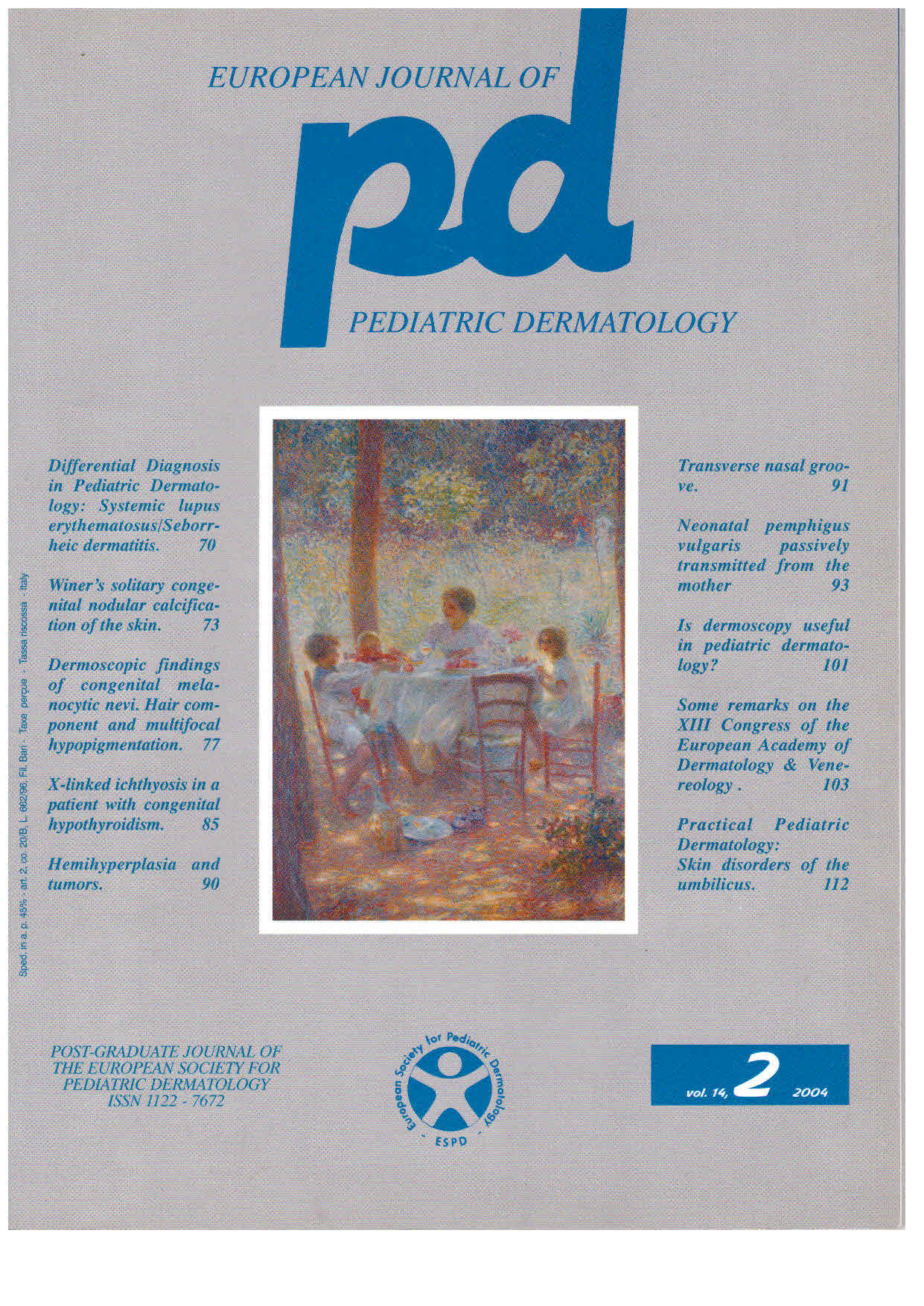Neonatal pemphigus vulgaris passively transmitted from the mother.
Downloads
How to Cite
Bonifazi E., Milioto M., Trashlieva V., Ferrante M.R., Milano A., Mazzotta F., Coviello C. 2004. Neonatal pemphigus vulgaris passively transmitted from the mother. Eur. J. Pediat. Dermatol. 14 (2):93-100.
pp. 93-100
Abstract
A transplacentally acquired neonatal disease has been documented in several autoimmune disorders. As in other autoimmune diseases, in neonatal pemphigus the passive passage through the placenta of maternal IgG autoantibodies is responsible for skin blisters in the newborn. The latter spontaneously recovers within 2-3 weeks without recurrences. Autoantibodies against keratinocyte desmosomal cadherins, namely desmoglein (Dsg) 1 and 3, are probably responsible for acantholysis in pemphigus vulgaris (PV). Their pattern of distribution in neonatal skin is similar to that of adult mucous membranes and may account for some clinical discrepancy between neonatal and maternal PV. A review of the previously reported cases of neonatal PV is presented and some hypotheses explaining the different clinical manifestations of the mothers and newborns are discussed. The review comprises 16 cases confirmed by immunofluorescence studies, including an already published personal case of a newborn with neonatal PV born to a clinically asymptomatic mother, who 6 months later developed PV.Keywords
Pemphigus, newborn, Desmoglein

